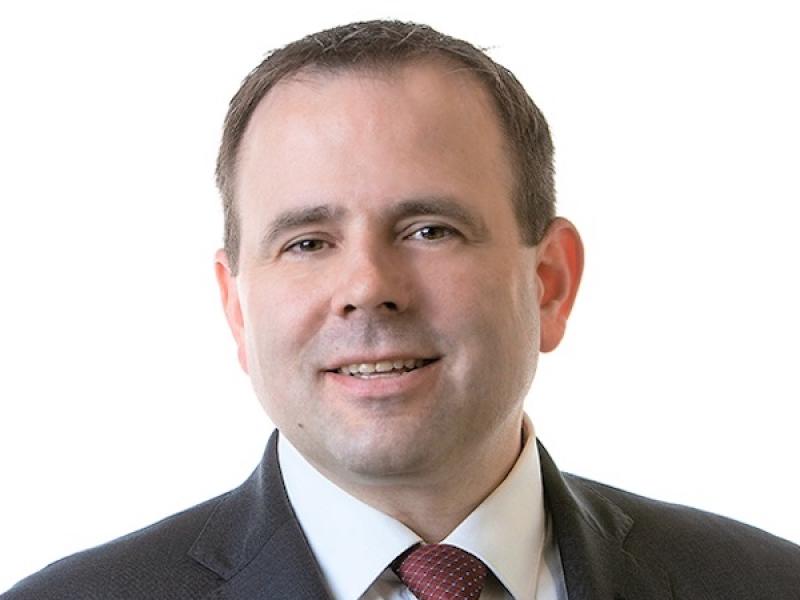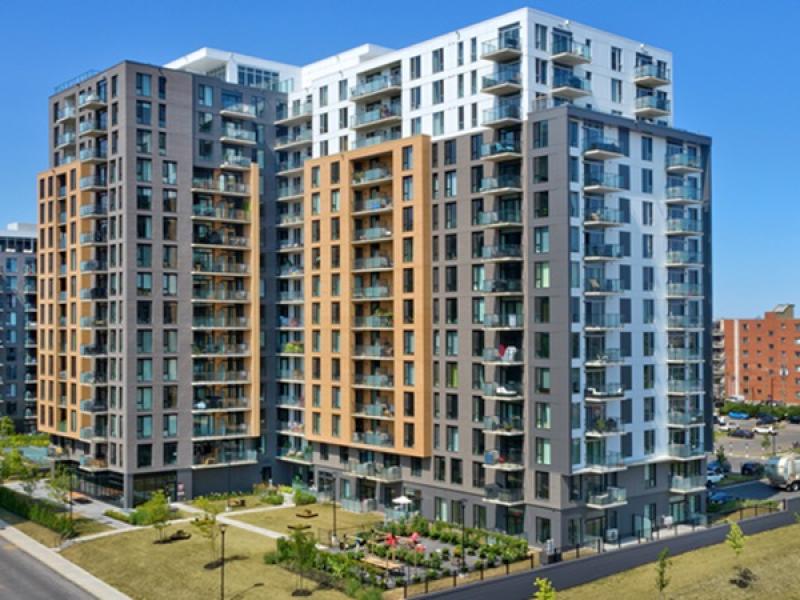
CBRE Ottawa managing director Shawn Hamilton. (Courtesy CBRE)
Ottawa’s population, employment numbers and commercial real estate markets have all experienced explosive growth and expansion during the past five years. However, a lack of available space for business to move, or expand into, is threatening to slow or halt that progress says CBRE’s Ottawa managing director Shawn Hamilton.
The problem is much more complex than the solution he said during his annual 2019 Market Outlook Breakfast. But, the message was simple: Get building. Soon.
“Some markets can become victims of their own success,” Hamilton told a room full of CRE professionals Wednesday at the downtown Westin Hotel. “Growth is never really bad, but we do want to avoid problems that can arise from growth.”
Currently, that is not happening, he said, noting there is almost no new office space under construction in the city, nor is there any significant uncommitted industrial space on the way (a million-square-foot distribution centre in East Ottawa, being built by Broccolini, is fully committed to Amazon).
“In Ottawa in the last five years the population has grown by nearly 100,000 people, bringing 46,000 new jobs to our economy across all sectors, and our GDP and GDP per capita is on the rise,” he said.
Massive absorption in past five years
This has led to rapid absorption in both the office (2.1 million square feet since 2014) and industrial sectors (almost two million square feet of positive absorption). The city’s office vacancy rate is 7.5 per cent; industrial vacancy is “the lowest ever” at 2.2 per cent.
Large blocks of office space are few and far between. There are fewer than a half-dozen 50,000-square-foot-plus spaces either currently available, or projected to be available during the next year. Hamilton predicted that, within a year, the city could be at near-zero office vacancy, in a period of accelerating absorption.
“Of the office growth that’s happened in the last five years, 87 per cent of it has happened in the last two years,” he said.
“On the industrial front, 53 per cent of it has happened in the last two years and I would argue this number would be significantly higher had vacancy rates on industrial not been so constrictingly low as they are now.”
Hamilton said while Ottawa has traditionally been a government-dominated market, that has changed dramatically. The split between government and private sector tenants in the CBD has reached the 50-50 plateau, largely driven by major growth in the city’s tech sector.
“The growth that we have been experiencing has been coming from new, dynamic, global sources, which is making for a more diverse local economy.”
What’s under development, what’s needed
The only large office building currently under construction in the city is in the West End Kanata market. The 100,000-square-foot Cominar REIT (CUF-UN-T) project will be anchored by Ford for a 40,000-square-foot research-and-development facility.
There are a couple of small office builds taking place at the massive mixed-use Zibi development, and the East Ottawa market still offers some opportunities as it recovers from a prolonged slump.

800 Palladium Drive is a 100,000-square-foot office being built in Ottawa’s west-end Kanata district. (Courtesy Cominar)
However, even with a proposed 200,000-square-foot, campus-style office building planned to begin construction this fall at Zibi, Hamilton said much more space is likely to be required. He projected a capacity for about 300,000 square feet of additional space in the CBD and as much as 800,000 square feet in Kanata.
“Now if this seems lofty to some in the room,” he stated, “let me point out to you that in Kanata right now there are 500,000 square feet of tenancies actively looking for space in a market where only roughly 500,000 square feet of (vacant) space exists.”
Based on development timelines of about 36 months for a large office building, that means a significant period of stagnant growth.
“In ultra-low vacancy rates, tenants can’t really do anything. They can’t move, they can’t refresh and they can’t grow,” Hamilton said. “The landlords are not as accommodating to tenants as they’d like to be and it all causes a certain amount of stress.
“Right now with all things being equal if a building is kicked off in the next couple of months there will be a period of almost two-and-a-half years of impractically low vacancy in our core, making growth very difficult.”
Why there is so little building in Ottawa
The projection is similar for Kanata, the West End tech hub, which has been leading the office space absorption recovery. Despite having just 14 per cent of Ottawa’s office inventory, it represents 48 per cent of the absorption.
“This demonstrates the power of our tech sector, along with how vacancy is a necessary ingredient to support growth,” he said.
Why the inertia? On the office side, Hamilton cited several factors:
* the removal by the city of a vacant building tax rebate;
* increasing construction and already high development costs, which increase risks for builders;
* and a market with relatively few players “who can control the pace of development to match their own particular corporate needs.”
These factors also apply on the industrial side, along with extremely high costs of building, or subdividing, properties for what would generally be smaller tenant requirements than in a city such as Toronto, Vancouver or Montreal.
Ottawa already has high average lease rates above $10 per square foot, but Hamilton said they would have to rise about 20 per cent more to make large-sale building economically feasible.
Solving the problem
To get ahead of the problem, Hamilton offered strategies for all the stakeholders. He said the city should consider reinstating its tax break for vacant commercial properties to alleviate the risk of building on spec, and address its high development charges. He noted that an increased commercial tax base benefits all ratepayers.
Hamilton called on tenants to review their space needs, and suggested the Department of National Defence consider speeding up vacating its downtown campus. Overall, he said the feds should look east to vacant space in Orleans for opportunities, which would offer multiple benefits.
“To my friends in the federal government, move some space out of the downtown core into Orleans,” he said. “It will create some vacancy that the private sector can absorb, and you can locate to a part of the city where you will be near your employment base and contribute to the two-way use of the LRT (now scheduled to come online this summer).”
Finally, he told developers to consider their options.
“To landlords: build. If you can’t build, then do what you can to be shovel-ready so you can shorten the cycle of development,” he said.
“The stakes are high. This is not a negative story, rather it’s one based on many positives. But right now, we are on track to be a victim of our own success.”







